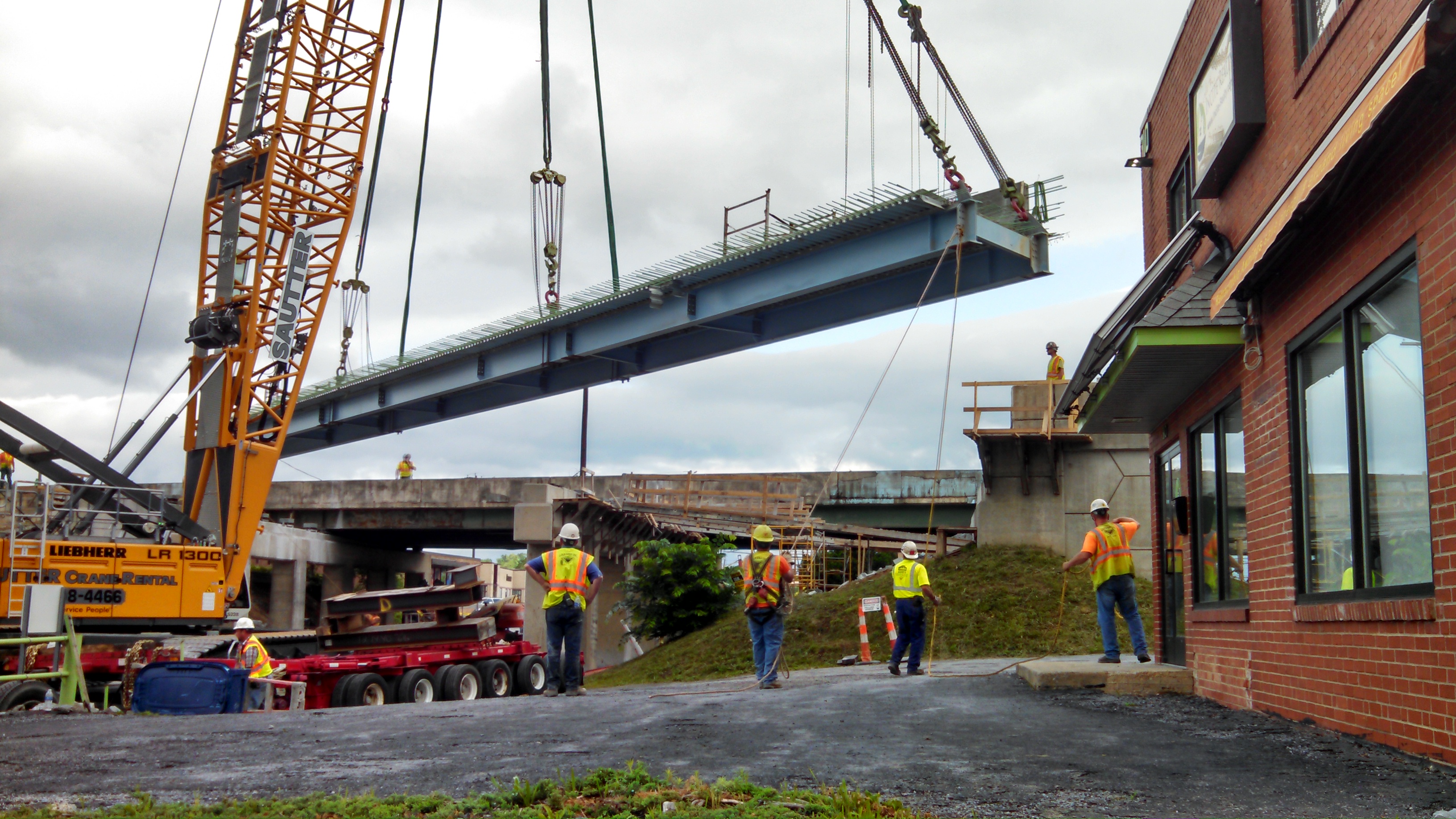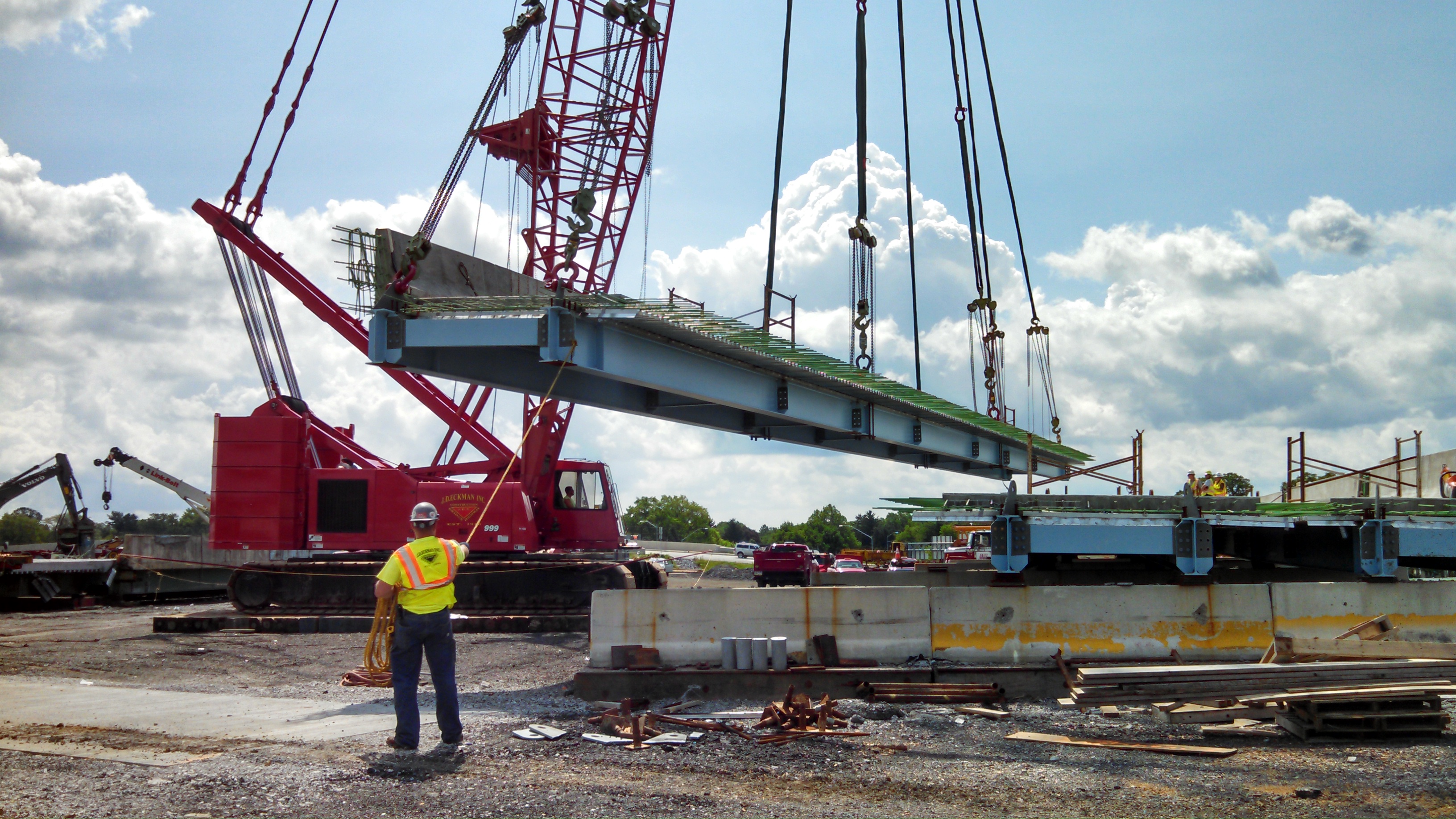Prefabricated Bridge Elements and Systems
Prefabricated Bridge Elements and Systems (PBES), an
Accelerated Bridge Construction (ABC) method, are manufactured offsite, and then transported and
assembled at the bridge construction
site. This technique
shortens construction schedules and helps ensure consistency in product quality. PBES is a
Federal Highway Administration (FHWA) Every Day Counts Round 2 (EDC-2) innovation that Pennsylvania championed.
How Does It Work?
With PBES, concrete placement and curing, steel reinforcement and formwork removal can all be done offsite under controlled conditions, and
once completed, the materials
are transported to the site and installed rapidly. Prefabricated systems are rolled, launched, slid, lifted, or otherwise transported into place,
ensuring that
no separate construction phase is required after placement. Due to the
manner in which they are installed, prefabricated systems often require innovative planning, engineering design,
and high-performance materials.
 Prefabricated deck elements
reduce
the need for traditional deck construction
tasks, including onsite deck form installation, overhang bracket and formwork installation, reinforcing steel placement, set
up of paving equipment, concrete placement, and concrete curing. Prefabricated beam elements are composed of two types: "deck" beam elements and "full-width" beam elements.
Deck beam elements eliminate conventional onsite deck forming activities and are typically placed in an abutting manner.
Full-width beam elements are typically rolled, slid, or lifted into place to allow deck placement operations to begin immediately after
site preparation.
Prefabricated deck elements
reduce
the need for traditional deck construction
tasks, including onsite deck form installation, overhang bracket and formwork installation, reinforcing steel placement, set
up of paving equipment, concrete placement, and concrete curing. Prefabricated beam elements are composed of two types: "deck" beam elements and "full-width" beam elements.
Deck beam elements eliminate conventional onsite deck forming activities and are typically placed in an abutting manner.
Full-width beam elements are typically rolled, slid, or lifted into place to allow deck placement operations to begin immediately after
site preparation.
What
Are
The
Benefits?
PBES
decreases congestion and
reduces onsite construction time as the materials
are built offsite
and
built
concurrently before being rapidly installed at the
bridge location.
Fewer delays and road closures also lead to cost savings and increased work zone safety,
due to fewer workers being exposed to moving traffic for a shorter
period of time.

Innovation in Motion
PennDOT District 11 used
several
ABC methods, including
PBES, on
the replacement of the
Shaler Street Bridge over U.S. Route 19 in Allegheny County.
Because U.S.
Route
19 carries approximately 27,000 vehicles
per day and provides connection and access from uptown Pittsburgh to the airport, Heinz
Field,
PNC Park , and suburbs, the district knew minimizing closures during this bridge replacement project was necessary.
PennDOT District 11 chose to use
PBES for consistency in product quality, in addition to reducing road closures.
To make the short-term closures possible,
the
new bridge beams and deck
were assembled at a nearby site
off of U.S. Route 19’s mainline while demolition of the old bridge took place. The components were then moved onto the new support structures using Self-Propelled Modular Transporters (SPMT), which was the first time this technique was used in Pennsylvania. SPMT uses a combination of multi-axle platforms operated through a
computer-controlled system.
SPMTs are
motorized vehicles that move at slow speed and
are capable of carrying large structures
from offsite locations, positioning them precisely into final position.
PennDOT
opened U.S.
Route
19
to commuters
in four days,
much more quickly by utilizing ABC techniques.
More Information
For more information about this innovation, contact the
STIC Management Team.